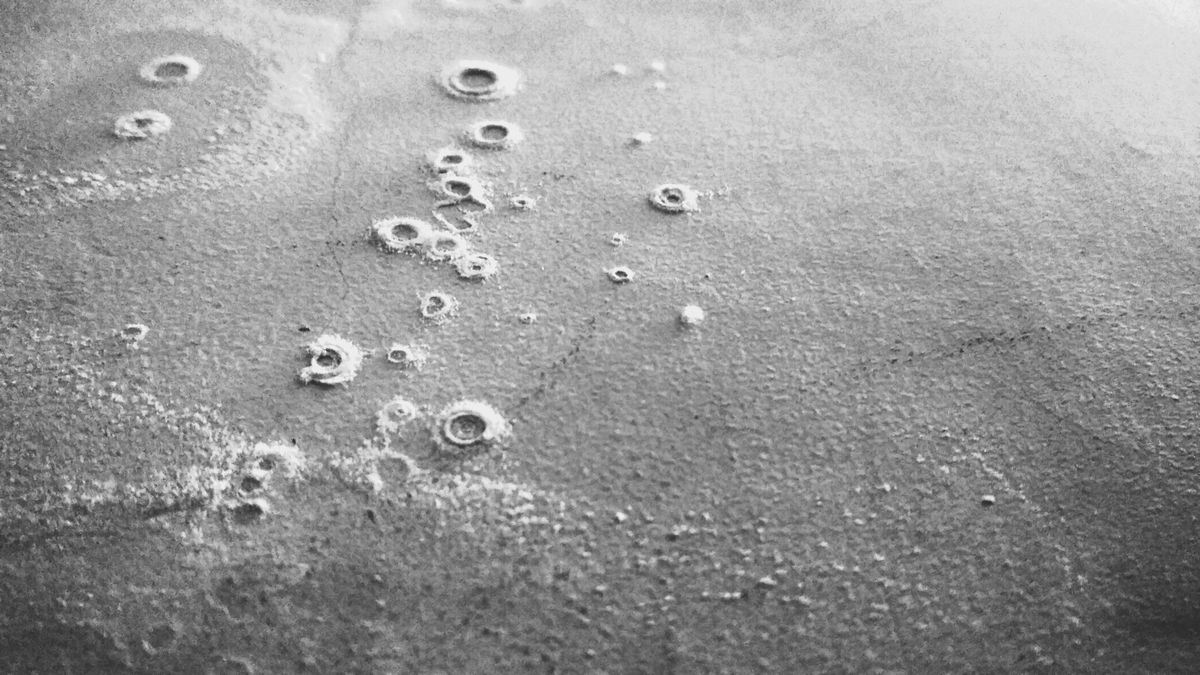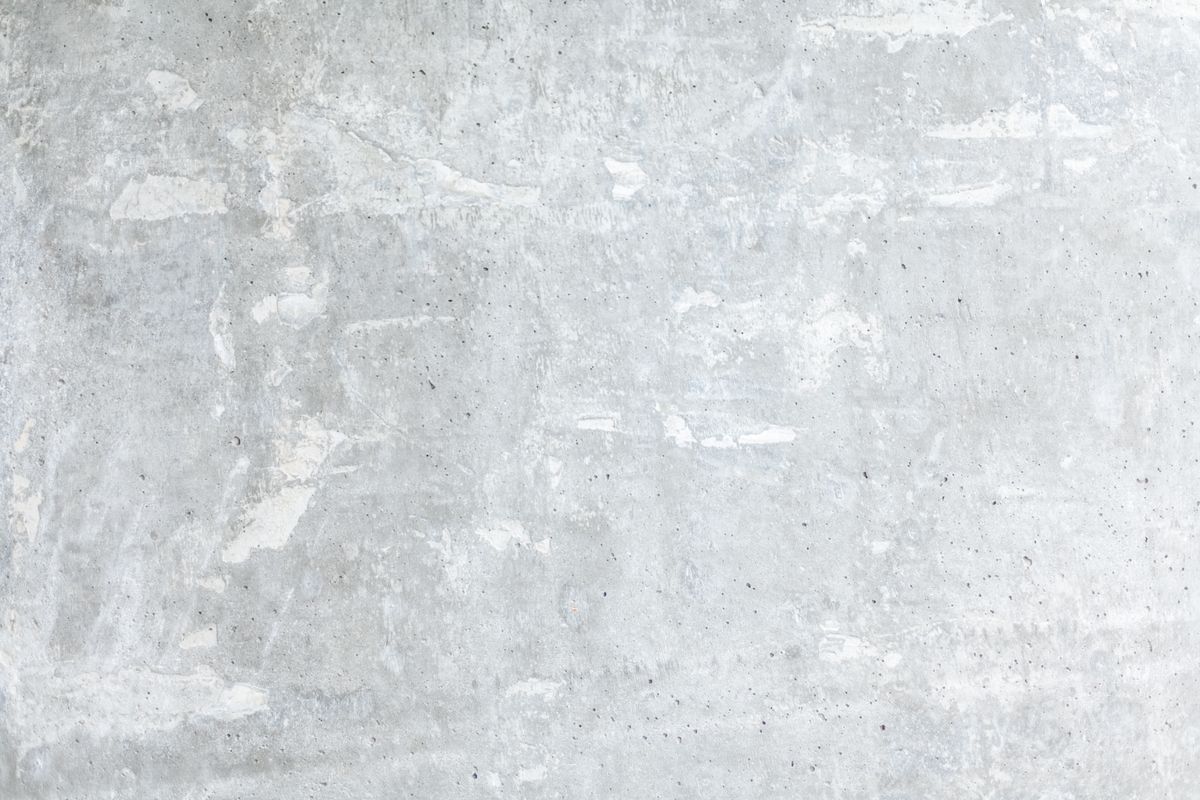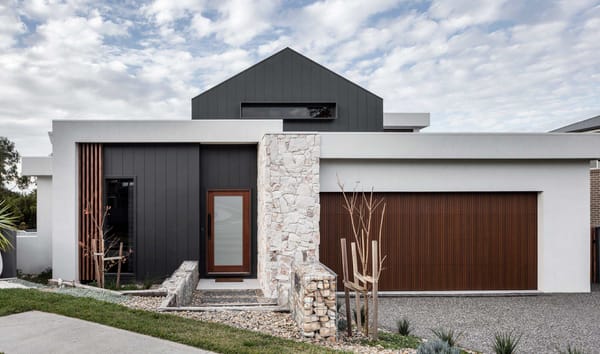Introduction
Cladding plays a pivotal role in enhancing both aesthetics and functionality for structures. This article explores traditional cladding options like wood and stone, as well as modern innovations like metal and composites. We examine the characteristics, advantages, and limitations of each material to understand their unique properties and performance.
By choosing the right cladding, you can create beauty, functionality, and sustainability for your projects. Cladding provides protection from weather, moisture, and fire hazards while contributing to energy efficiency through insulation and heat retention. Whether you're a professional or a home owner, this guide equips you with the knowledge to select suitable cladding for your needs and bring visions to life.
Understanding Cladding
Cladding plays a crucial role in enhancing the aesthetics, durability, and energy efficiency of a building. It serves as the protective layer that shields the structure from external elements and ensures its longevity.
When it comes to choosing the right cladding materials, the options can be overwhelming. Each type offers distinct advantages and suits specific architectural styles. Let's explore some of the popular choices available in the market:
- Brick Cladding: Brick cladding is renowned for its timeless appeal and durability. It brings a classic charm to any building and offers excellent thermal insulation properties. Its versatility allows for various patterns and textures, providing endless design possibilities.
- Stone Cladding: Stone cladding exudes elegance and natural beauty, adding a touch of grandeur to both traditional and contemporary structures. With its wide range of colours and textures, stone cladding can create a unique and striking facade. It is also known for its durability and low maintenance requirements.
- Metal Cladding: Metal cladding offers a sleek and modern appearance, making it a popular choice for commercial buildings and contemporary homes. It provides exceptional weather resistance and can be customized in different finishes, including steel, aluminium, and copper.
- Timber Cladding: Timber cladding brings warmth and character to a building, creating a welcoming and organic feel. It offers excellent insulation properties and can withstand the test of time when properly maintained. Timber cladding can be sourced sustainably, making it an eco-friendly option.
By understanding the characteristics and benefits of each cladding material, you can select the one that aligns with your project's requirements and personal preferences. Remember to consider factors such as climate, maintenance needs, and budget while making your decision.

1.1 Benefits of Proper Cladding Selection
Proper cladding selection plays a crucial role in the overall performance and appearance of a building. When it comes to aesthetics, the right choice of cladding can truly transform the look of a structure, giving it a distinct and visually appealing character.
Beyond just appearances, cladding also serves as an effective insulator, helping to regulate temperature and reduce energy consumption. By selecting the appropriate cladding material, building owners can enjoy improved insulation, leading to enhanced energy efficiency and lower utility bills.
Durability is another key consideration when it comes to cladding selection. The right cladding material can protect a building from external elements, such as extreme weather conditions, UV radiation, and moisture. This not only helps to maintain the structural integrity of the building but also prolongs its lifespan, reducing the need for frequent maintenance and repairs.
In addition to aesthetics, insulation, and durability, it is important to focus on the energy efficiency and weather resistance of cladding materials. Energy-efficient cladding can contribute to sustainable building practices, minimising the environmental impact and reducing carbon emissions. Weather-resistant cladding materials ensure that the building remains protected and unaffected by harsh weather conditions, preventing damage and preserving its aesthetic appeal over time.
As you continue exploring the world of cladding, it is essential to consider the specific requirements and constraints of each project. This involves taking into account factors such as geographical location, building design, budget, and desired aesthetic outcomes. By carefully evaluating these aspects, you can make an informed decision and select the ideal cladding material that meets both functional and visual requirements.
Remember, the right choice of cladding can significantly enhance the overall performance and appearance of a building. From improving insulation and energy efficiency to ensuring long-term durability and weather resistance, proper cladding selection is a vital component of successful construction projects.

Chapter 2: Types of Cladding Materials
Timber Cladding: A Natural and Aesthetic Choice
Timber cladding offers a natural and aesthetically pleasing option for enhancing the appearance of a building. In this section, we will explore the unique appeal and sustainability of timber cladding. We will also address maintenance considerations and potential challenges associated with this material.
Timber cladding has become a popular choice among architects and builders due to its timeless beauty and eco-friendly qualities. The use of natural wood can add warmth and character to any structure, creating an inviting and harmonious atmosphere.
One of the key advantages of timber cladding is its sustainability. Wood is a renewable resource, and when sourced from responsibly managed forests, it can contribute to the preservation of our environment. By choosing timber cladding, you not only enhance the visual appeal of your building but also make a positive impact on our planet.
Maintenance is an important aspect to consider when selecting cladding materials, and timber cladding requires regular care to maintain its quality and longevity. However, with proper treatment and periodic inspections, the natural beauty of the timber can endure for years to come. It is recommended to apply protective coatings or finishes to protect the wood from moisture and UV radiation, keeping it resistant to decay and weathering.
While timber cladding offers numerous benefits, it is crucial to address potential challenges associated with this material. Wood is susceptible to insect infestations and rot if not adequately protected. However, with proper installation and ongoing maintenance, these challenges can be mitigated effectively.
In terms of design flexibility, timber cladding provides a wide range of options. From traditional to modern architecture, wood can be shaped, stained, or painted to achieve various styles and effects. Additionally, timber cladding can be used in combination with other materials, such as glass or metal, to create visually striking facades.
When considering timber cladding for your project, it is essential to evaluate the local climate and environmental conditions. Different wood species have varying levels of natural durability and resistance to decay. Consulting with a professional or a timber specialist can help you make an informed decision based on the specific requirements of your location.
To summarise, timber cladding offers a natural and aesthetically pleasing choice for enhancing the appearance of buildings. Its sustainability, warmth, and design flexibility make it a popular option among architects and builders. While maintenance and potential challenges should be considered, with proper treatment and periodic care, timber cladding can

Vinyl Cladding: Durability and Low Maintenance
Vinyl cladding presents a practical and efficient solution for building exteriors. With its exceptional durability and low-maintenance nature, vinyl cladding has become a popular choice among architects and home owners alike.
One of the key advantages of vinyl cladding is its cost-effectiveness. Compared to other cladding materials, vinyl is relatively affordable, making it an attractive option for those working with a limited budget. Additionally, its ease of installation further contributes to its cost-effectiveness, as it requires less labour and time.
Another noteworthy feature of vinyl cladding is its low-maintenance requirements. Once installed, vinyl cladding requires minimal upkeep, saving you both time and money in the long run. Unlike timber cladding, which may need regular staining or painting, vinyl cladding remains vibrant and attractive with little effort. A simple routine cleaning with mild soap and water is usually sufficient to maintain its appearance.
Concerns about the environmental impact of vinyl cladding have been raised, but advancements in technology have significantly improved its eco-friendliness. Many vinyl cladding products now contain recycled materials, reducing their carbon footprint and promoting sustainability. Furthermore, vinyl cladding's durability and longevity contribute to waste reduction as it eliminates the need for frequent replacements.
When considering vinyl cladding for your project, it is crucial to choose high-quality materials from reputable manufacturers. This ensures that you benefit from the material's inherent strength and resistance to fading, cracking, and warping. By selecting a trusted supplier, you can have confidence in the performance and longevity of your vinyl cladding.
In conclusion, vinyl cladding offers a durable, cost-effective, and low-maintenance solution for enhancing the exteriors of buildings. With its improved environmental friendliness and advancements in design, vinyl cladding continues to gain popularity in the construction industry. By carefully considering your project's requirements and consulting with experts, you can confidently incorporate vinyl cladding into your building design, achieving both aesthetic appeal and practical functionality.

Metal Cladding: Modern Versatility
Metal cladding offers a modern and versatile option for architectural design. Its sleek and contemporary aesthetic adds a touch of sophistication to any building. Whether you're aiming for an industrial look or a sleek, minimalist design, metal cladding can help you achieve your desired style.
One of the key advantages of metal cladding is its durability. Metal materials are known for their strength and resistance to wear and tear. This means that your building will remain protected and maintain its pristine appearance for years to come. Metal cladding is also highly resistant to fire, making it a safe choice for commercial and residential structures alike.
When it comes to architectural flexibility, metal cladding truly shines. With a wide range of metals available, such as aluminium, steel, and copper, you have the freedom to explore different textures, finishes, and colours. This allows you to create unique and eye-catching designs that stand out from the crowd.
In addition to its aesthetic appeal, metal cladding offers excellent weather resistance. It can withstand extreme temperatures, heavy rains, strong winds, and even saltwater exposure. This makes it an ideal choice for coastal areas or regions with harsh weather conditions.
While metal cladding is undoubtedly a fantastic option, it is important to consider some factors before making your selection. Metal cladding can be more expensive compared to other materials, so it's crucial to assess your budget and project requirements. Additionally, it's essential to work with experienced professionals who specialise in metal cladding installation to ensure flawless execution.
In summary, metal cladding provides a modern, versatile, and durable solution for architectural design. Its aesthetic appeal, durability, and weather resistance make it a popular choice among architects and builders. By selecting metal cladding, you can create a stunning and long-lasting exterior that showcases your unique style and withstands the test of time.
Continue reading to discover more about other cladding materials and find the perfect fit for your project.

Fibre Cement and Compressed Fibre Cladding: A Durable and Versatile Choice
When it comes to cladding materials, fibre cement and compressed fibre offer a durable and versatile solution for building exteriors. In this section, we will delve into the unique qualities of fibre cement and compressed fibre cladding, exploring their benefits, applications, and considerations.
Benefits of Fibre Cement Cladding
Fibre cement cladding is renowned for its exceptional durability and resistance to various external elements. This material is made by combining cellulose fibre, cement, and additives to create a robust and long-lasting product.
One of the key advantages of fibre cement cladding is its fire resistance. It provides a protective layer that can help prevent the spread of flames in the event of a fire, adding an extra level of safety to buildings. Additionally, fibre cement cladding is resistant to moisture, rot, and pests, ensuring that the structural integrity of the building remains intact for years to come.
Versatility and Aesthetics
Fibre cement cladding offers a wide range of design options to suit various architectural styles and preferences. Its versatility allows it to mimic the appearance of other materials, such as timber or stone, while providing the durability and low maintenance of fibre cement. This makes it a popular choice for both residential and commercial projects.
Considerations and Maintenance
While fibre cement cladding is known for its durability, it is essential to consider a few maintenance aspects. Regular inspections and cleaning can help identify and address any signs of wear or damage. It is also important to follow the manufacturer's guidelines for painting or repainting fibre cement cladding to ensure its longevity.
Compressed Fibre Cladding
Compressed fibre cladding, also known as high-density fibreboard (HDF), is another option worth considering. This material is made by compressing wood fibres with resin under high pressure, resulting in a dense and strong cladding product.
Compressed fibre cladding offers excellent dimensional stability, meaning it is less prone to expansion and contraction with changes in temperature and humidity. This property makes it ideal for areas with fluctuating weather conditions. Additionally, compressed fibre cladding provides enhanced impact resistance, making it suitable for high-traffic areas or buildings exposed to potential impacts.

Chapter 3: Maintenance Requirements
Different cladding materials have varying maintenance needs. It is crucial to understand the specific maintenance requirements of each cladding material to ensure its longevity and preserve its aesthetic appeal. In this section, we will explore the maintenance requirements of various cladding materials and provide valuable tips for extending the lifespan of your cladding through regular upkeep.
Timber Cladding Maintenance
Timber cladding, being a natural choice, requires regular maintenance to protect it from the elements and maintain its beauty. To ensure the longevity of timber cladding, it is recommended to follow the manufacturer's guidelines for cleaning and treating the wood. Regular inspections should be conducted to identify any signs of rot, decay, or damage. If any issues are detected, prompt repairs or replacements should be carried out to prevent further deterioration.
Vinyl Cladding Maintenance
One of the key advantages of vinyl cladding is its low maintenance requirements. However, to keep it looking its best, occasional cleaning is necessary. Simply washing the cladding with mild detergent and water can effectively remove dirt and grime. Avoid using abrasive cleaners or harsh chemicals as they may damage the surface. Regular inspections should also be performed to check for any cracks or loose panels. If any issues are found, contacting a professional installer is recommended for appropriate repairs.
Metal Cladding Maintenance
Metal cladding offers modern versatility and durability, but proper maintenance is vital to ensure its performance over time. Regular cleaning is essential to prevent the buildup of dirt, pollutants, and corrosive materials on the surface. This can be achieved by using a gentle cleaning solution and a soft brush or cloth. Regular inspections should be carried out to identify any signs of corrosion or damage. Prompt repairs or recoating should be undertaken to protect the metal cladding and maintain its aesthetic appeal.
Fibre Cement and Compressed Fibre Cladding Maintenance
Fibre cement and compressed fibre cladding are durable and versatile choices that require minimal maintenance. To keep them in optimum condition, regular cleaning is recommended. This can be done by using a mild detergent and water to remove dirt and stains. Inspecting the cladding periodically for any cracks, chips, or signs of moisture infiltration is essential. Any necessary repairs should be addressed promptly to prevent further damage.
By following these maintenance guidelines specific to each cladding material, you can ensure the longevity and visual appeal of your chosen cladding. Regular upkeep and prompt repairs will help protect your investment and maintain the overall
Chapter 4: Making an Informed Decision
Making an informed decision when choosing cladding is crucial. This section will summarise the key factors that should be considered, such as aesthetics, durability, maintenance, and sustainability.
Maintenance
When selecting cladding for your property, it is important to take into account the maintenance requirements of each material. Vinyl cladding, for instance, offers a major advantage with its low maintenance needs. Occasional cleaning with a mild detergent and water is sufficient to keep it looking its best. On the other hand, metal cladding requires regular cleaning to prevent the buildup of dirt and corrosive materials. Fibre cement and compressed fibre cladding, being durable choices, also require minimal maintenance. By understanding the maintenance demands of each option, you can choose the cladding material that aligns with your specific needs and resources.
Sustainability
Considering the environmental impact of your cladding choice is of growing importance. Opting for eco-friendly materials not only reduces your carbon footprint but also contributes to a healthier planet. Vinyl cladding, for example, is known for its energy efficiency and recyclability. Metal cladding is often made from recycled materials, making it a sustainable choice. Fibre cement and compressed fibre cladding are also environmentally friendly options as they are made from natural and recyclable materials.
Aesthetics
The visual appeal of your cladding plays a significant role in enhancing the overall look of your property. Vinyl cladding offers a wide range of colours and finishes, allowing you to achieve the desired aesthetic effect. Metal cladding, with its sleek and modern appearance, adds a contemporary touch to any building. Fibre cement and compressed fibre cladding provide a versatile and natural look that can complement a variety of architectural styles. By carefully considering the aesthetic aspects, you can select cladding that not only protects your property but also enhances its beauty.
Durability
The longevity of your cladding is essential for long-term value and protection. Vinyl cladding, despite its low maintenance requirements, is highly durable and resistant to rot, insects, and weathering. Metal cladding, known for its strength and durability, can withstand harsh environmental conditions. Fibre cement and compressed fibre cladding offer excellent resistance against moisture, fire
Conclusion
When it comes to selecting the ideal cladding material for your building, it is crucial to consider various factors that contribute to its long-term value and protection. As discussed in the previous chapters, maintenance requirements, sustainability, aesthetics, and durability play significant roles in making an informed decision.
First and foremost, taking into account the maintenance demands of different cladding options is essential. Regular cleaning is necessary to prevent dirt and corrosive materials from building up. Fortunately, options like vinyl cladding, fibre cement, and compressed fibre cladding require minimal maintenance, allowing you to invest your resources wisely.
Sustainability is an increasingly important aspect to consider in today's world. By opting for eco-friendly materials, you not only reduce your carbon footprint but also contribute to a healthier planet. Vinyl cladding is known for its energy efficiency and recyclability, while metal cladding often utilises recycled materials. Fibre cement and compressed fibre cladding are also environmentally friendly choices as they are made from natural and recyclable materials. Prioritising sustainability ensures that your property not only looks good but also aligns with your values.
Aesthetics should never be overlooked when selecting cladding. The visual appeal of your chosen material can greatly enhance the overall look of your property. Vinyl cladding offers a wide range of colours and finishes to achieve the desired aesthetic effect. Metal cladding, with its sleek and modern appearance, adds a contemporary touch to any building. Fibre cement and compressed fibre cladding provide a versatile and natural look that can complement various architectural styles. By carefully considering aesthetics, you can create a property that not only stands the test of time but also captures attention.
Lastly, durability is paramount for long-term value and protection. Vinyl cladding, despite its low maintenance requirements, is highly resistant to rot, insects, and weathering. Metal cladding, renowned for its strength, can withstand even the harshest environmental conditions. Fibre cement and compressed fibre cladding offer excellent moisture and fire resistance, ensuring the longevity of your building.
Frequently Asked Questions (FAQ)
Q1: What is the purpose of cladding in building construction?
Cladding serves as a protective and aesthetic layer for buildings. It shields structures from external elements like weather and contributes to the overall visual appeal.
Q2: How does timber cladding enhance building exteriors?
Timber cladding offers a timeless and warm aesthetic that works well in various designs. Its natural appeal creates a connection with nature and provides insulation for energy efficiency.
Q3: Is vinyl cladding a durable option?
Yes, vinyl cladding is known for its durability and low maintenance. It's a cost-effective choice that retains its vibrancy with routine cleaning.
Q4: What are the benefits of metal cladding?
Metal cladding provides a modern aesthetic and durability against wear, tear, and harsh weather conditions. It's also fire-resistant and offers design flexibility.
Q5: Are fibre cement and compressed fibre cladding eco-friendly?
Yes, both fibre cement and compressed fibre cladding are made from sustainable materials. They offer durability and resistance to external elements.
Q6: How important is aesthetics when selecting cladding?
Aesthetics play a vital role in enhancing property value and overall appeal. Choosing cladding that matches your architectural style and surroundings creates a cohesive and attractive exterior.
Q7: What maintenance is required for different cladding materials?
Maintenance varies for each material. Timber cladding requires regular inspections and protection against moisture. Vinyl cladding needs occasional cleaning, while metal cladding benefits from routine cleaning and inspections. Fibre cement and compressed fibre cladding are low-maintenance options but still need periodic care.
Q8: How can I make an informed decision when choosing cladding?
Consider factors such as maintenance, sustainability, aesthetics, and durability. Understanding the strengths of each material ensures a well-informed decision.
Q9: What does the final cladding choice encompass?
By combining maintenance, sustainability, aesthetics, and durability, your cladding choice creates enduring value and appeal. It complements your building's surroundings and stands the test of time.
Further Reading










